Last updated: February 10, 2025
Article
The Kennedys and the Civil Rights Movement

L-R: Secretary of Labor Willard Wirtz, Mathew Ahmann, Rev. Dr. Martin Luther King, Jr., John Lewis, Rabbi Joachim Prinz, Rev. Eugene Carson Blake, A. Philip Randolph, President Kennedy, Vice President Johnson, Walter Ruether, Whitney Young, Floyd McKissick.
Cecil Stoughton. White House Photographs. John F. Kennedy Presidential Library and Museum, Boston
“One hundred years of delay have passed since President Lincoln freed the slaves, yet their heirs, their grandsons, are not fully free. They are not yet freed from the bonds of injustice. They are not yet freed from social and economic oppression. And this Nation, for all its hopes and all its boasts, will not be fully free until all its citizens are free.”
– President John Fitzgerald Kennedy, June 11, 1963.
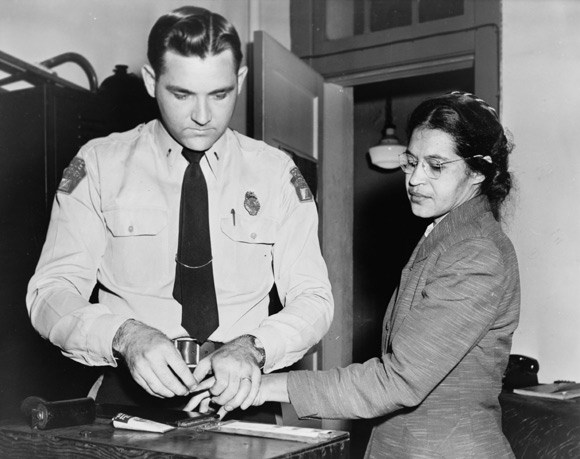
Associated Press photo - New York World-Telegram & Sun Collection, 1956. Prints and Photographs Division of the Library of Congress.
Time of Change
The 1950s and 1960s in the United States were a period of continued struggle for civil rights and equality under the law.
In 1954, the Supreme Court’s ruling in Brown v. Board of Education made segregation in public schools unconstitutional. Despite the landmark ruling, many states refused to follow federal law. In 1957, nine school children in Arkansas, known today as the Little Rock Nine, enrolled at Little Rock Central High, a segregated white high school. Seeking an education, this forced Arkansas to make a choice on how the federal court rulings would be applied. Although the students were enrolled, federal troops were sent in to Little Rock to protect them from an angry mob.
That same year, the Civil Rights Act of 1957 was passed. The act allowed for the prosecution of anyone who denied someone their right to vote.
Rosa Parks and Dr. Martin Luther King Jr. became nationally known to white Americans for their roles in the Montgomery Bus Boycott and the integration of the public transit in Montgomery, Alabama.
Despite the progress made, significant inequalities still existed. Subjective literacy tests were used to deny Black Americans their right to vote. They also had unequal access to education and employment.
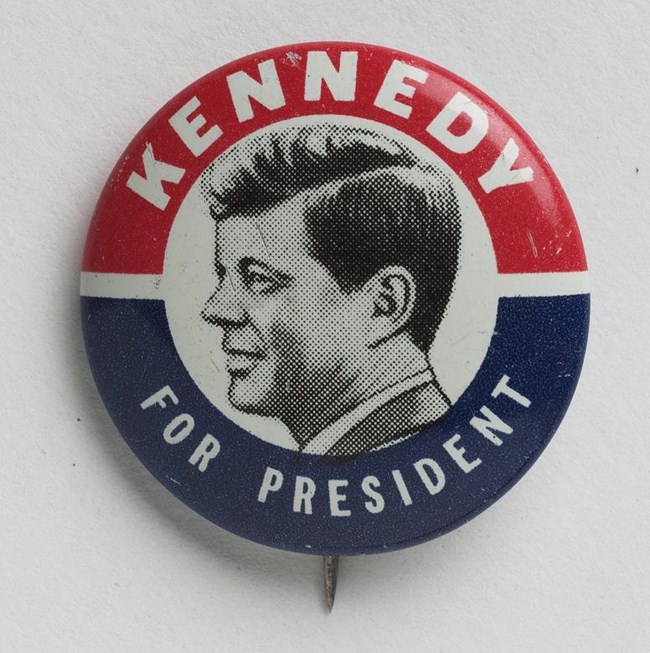
John F. Kennedy Presidential Library and Museum, Boston, MA
The 1960 Campaign
By late 1960, Senator John F. Kennedy and his campaign team were eager to find a way to pull ahead in the final days of the presidential race. On October 19, Dr. Martin Luther King Jr., along with students, was protesting local segregation ordinances in Georgia and was sent to jail for trespassing. King was sentenced to six months of hard labor for violating his probation on a previous misdemeanor. After hearing of King’s sentence, Senator Kennedy and his brother, Robert, called Georgia governor, Ernest Vandiver, and petitioned King’s release. Senator Kennedy called Coretta Scott King, MLK’s wife, to offer his help. Meanwhile, Robert Kennedy called the judge and was able to convince him to release King. The Kennedys’ role in King’s release quickly spread in the Black community. Senator John F. Kennedy won seventy percent of the Black vote in November. The Black vote was key in Kennedy’s victory.
John F. Kennedy Takes Office
During his first few days in office, President Kennedy instructed his cabinet secretaries to increase hiring of Black federal employees. He also requested an audit of diversity in federal employment and pay grades, and called for initiatives to diversify the workforce. Kennedy was reluctant to propose major civil rights legislation during his first term for fear of losing the support of Southern Democrats, many of whom benefited from and supported segregation policies. President Kennedy needed their support to pass his economic and foreign policy agendas, and to support his reelection.
The Freedom Riders
In May 1961, two groups of young activists set out from Washington D.C. to test a Supreme Court case ruling that declared segregation on interstate transportation illegal. They passed through multiple states without major incidence. Upon arriving in South Carolina, some of the riders, including John Lewis, were attacked and beaten. When the Freedom Riders reached Alabama, their bus was fire-bombed, riders were forced to flee into a white mob that surrounded their bus, and were beaten with iron bars. Attorney General Robert Kennedy deployed 400 federal marshals to Alabama to protect the Freedom Riders. The Justice Department then petitioned the Interstate Commerce Commission (ICC) to adhere to federal law. By September, the ICC ruled in favor of the petition.
Birmingham, Alabama
In April 1963, Dr. King and Rev. Fred Shuttlesworth organized the Birmingham Campaign. This series of protests, from community members and students, sought to dismantle the city’s discriminatory practices. The City Commissioner, Eugene “Bull” Connor, ordered police to use dogs and high-pressure fire hoses on the peaceful protesters. These images were broadcast across the country. President Kennedy was shocked by what he saw and began to rethink the federal government’s role in the Civil Rights Movement.
Robert Kennedy sent his Assistant Attorney General, Burke Marshall, to Birmingham to mediate negotiations between the campaign and white southern business leaders. An agreement came that May to desegregate lunch counters and other places of business.
White segregationists responded violently, including bombing a hotel that housed some of the campaign’s leaders, including Dr. King. In response to this violence, President Kennedy readied 3,000 federal troops outside of Birmingham.
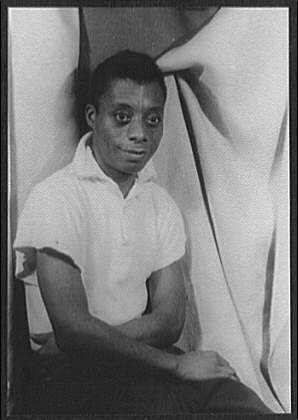
Van Vechten, C., photographer. (1955) Portrait of James Baldwin. , 1955. Sept. 13. [Photograph] Retrieved from the Library of Congress
The Baldwin Meeting
On May 24, 1963, Robert Kennedy met to discuss the state of race relations in the United States with writer James Baldwin, along with a small group of Black writers and activists, in New York City.
The meeting did not go well. One of the guests, Jerome Smith, a former Freedom Rider, declared he would “never” serve his country, because he did not want to fight for a country that had “continued to deny us (Black Americans) our rights.” Robert Kennedy was upset by Smith’s statement; he could not understand why someone would not want to serve their country, especially since military service was so highly regarded in the Kennedy family.
As the meeting continued, the group expressed their grievances with the Kennedy administration and their handling of civil rights. Robert Kennedy only alienated the group more when he tried to compare his family’s experience with discrimination as Irish Catholics to the racial injustice faced by people of color. The group felt that he was trying to compare two different experiences and was minimizing the hardship faced by Black Americans for centuries.
This meeting was crucial in shaping Robert Kennedy’s views on civil rights. As Kennedy learned to empathize with the Black community and continued to listen, the more he believed Congressional action was critical. He insisted that civil rights legislation must move forward that would ensure protection of every citizen’s rights.
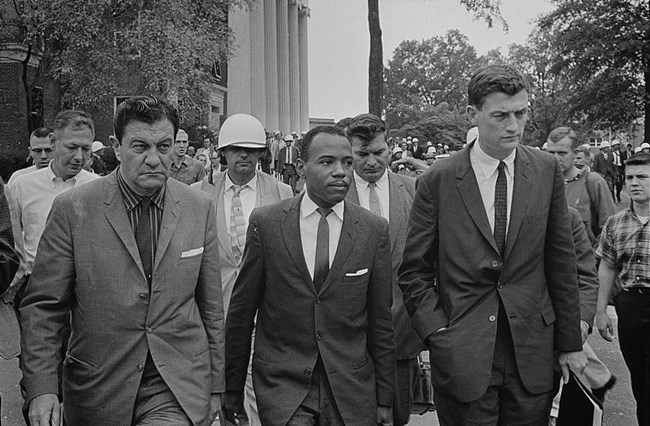
Trikosko, M. S., photographer. (1962) Integration at Ole Mississippi University / MST. Mississippi Oxford, 1962. Oct. 1. [Photograph] Retrieved from the Library of Congress
Integrating Schools
During the Kennedy administration, significant progress was made in the integration of public schools and universities.
In 1962, James H. Meredith Jr., an Air Force veteran, was repeatedly denied admission from the University of Mississippi, due to his race. When Meredith arrived on campus to register, he was blocked by state officials. Student riots ensued. President Kennedy sent in the National guard and federal troops to protect Meredith and ensure he was safely registered.
In June 1963, Vivian Malone and James Hood arrived at the University of Alabama campus to integrate the university. They were met by Govermor Wallace blocking the door of the schoolhouse, acting on his promise of “segregation now, segregation tomorrow, and segregation forever.” President Kennedy intervened and federalized the Alabama National Guard to force Wallace to comply.
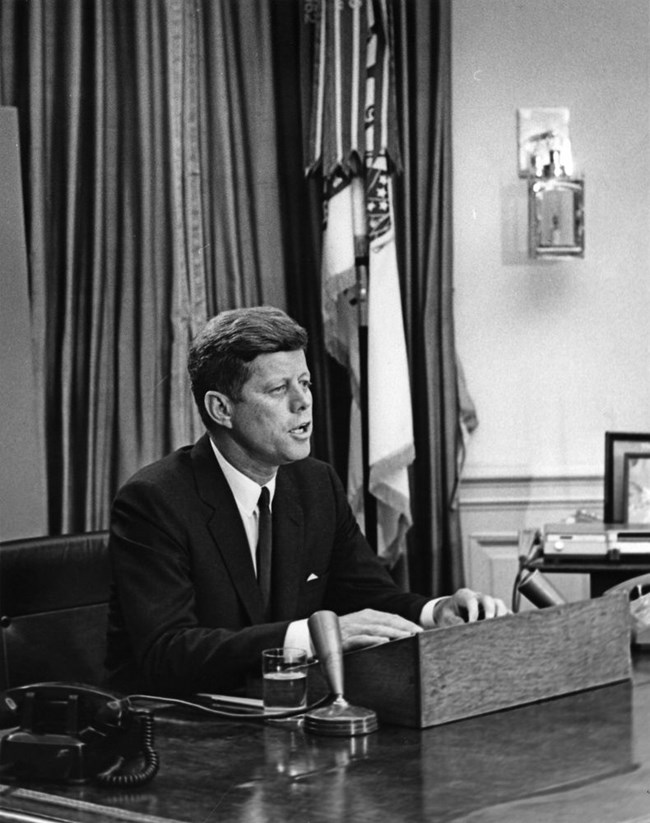
Abbie Rowe. White House Photographs. John F. Kennedy Presidential Library and Museum, Boston
President Kennedy Addresses the Nation
By seeing the struggles of the Freedom Riders, the peaceful protestors in Birmingham, students’ acts of integration and the violent backlash from white southerners, President Kennedy was forced to confront the issue of civil rights.
On the day that Governor Wallace stood in the schoolhouse door, President Kennedy made a televised address to the nation trying to unite the country around the need for civil rights legislation.
President Kennedy defined civil rights as not just a constitutional issue, but also a “moral issue.” He also proposed the Civil Rights Act of 1963, which would provide protection of every American’s right to vote under the United States Constitution, end segregation in public facilities, and require public schools to be integrated.
In order to try and ensure his bill’s passage, President Kennedy met with prominent Civil Rights leaders to discuss the content of the bill. He also met with businessmen, religious leaders, and others to build the bipartisan support the bill would need to pass.
The bill struggled to move through Congress. Civil Rights leaders were worried that the bill had stalled and organized The March on Washington for Jobs and Freedom that August. Despite their best efforts, by November of 1963, the bill was stalled in debate.
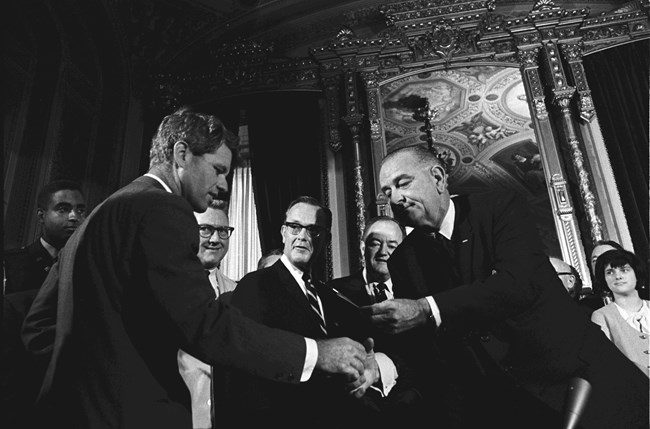
LBJ Library photo by Yoichi Okamoto
After the Kennedy Presidency
Shortly after being sworn in following President Kennedy’s assassination, President Lyndon B. Johnson urged the passage of the Civil Rights Act be carried out in honor of the late president.
Johnson used his connections and experience gained as former Senate Majority Leader to sucessfuly negotiate support for the bill. On July 2, 1964, a little more than a year after President Kennedy introduced the bill, President Johnson officially signed the Civil Rights Act of 1964 into law. The act made discrimination in public facilities and federally funded programs illegal.
Robert Kennedy left the Johnson Administration when he was elected as a U.S. Senator to New York. As a senator, he continued his support for the Voting Rights Act of 1965. He also continued to travel the country, expanding his views on race and poverty in America. In 1968, Kennedy made his own presidential bid. He quickly garnered overwhelming support from the Black community and other minorities who felt he would be their greatest advocate in the Oval Office.
On the evening of April 4, 1968, Martin Luther King Jr. was assassinated.
Kennedy was scheduled to deliver a campaign speech that night in Indianapolis, IN to a crowd of predominantly Black Americans. As he delivered the shocking news of King’s assassination, he empathized with his supporters and encouraged them to find peaceful and productive ways to channel their sorrow. The text and video of the speech are linked here.
As violence broke out across many American cities that evening, Indianapolis stayed peaceful. John Lewis would later say, “He {Kennedy} became the one man who could soothe the savage pain that swept through the city of Indianapolis, and there were no violent outbreaks there. I do remember calming my own sorrow in that dark hour by thinking, Dr. King is gone, but we still have Bobby."
Two months later, Robert Kennedy was assassinated.
Although Senator Kennedy was assassinated in 1968, his legacy continues through the nonprofit, Robert F. Kennedy Human Rights. In 1995, President Clinton visited Indianapolis' Martin Luther King Jr. Park to dedicate the “Landmark for Peace” memorial commemorating the site where Robert Kennedy delivered his immortal words on the night of Dr. Martin Luther King Jr’s assassination.
“Each time a man stands up for an ideal, or acts to improve the lot of others, or strikes out against injustice, he sends forth a tiny ripple of hope, and crossing each other from a million different centers of energy and daring those ripples build a current which can sweep down the mightiest walls of oppression and resistance.”
– Robert F. Kennedy. University of Capetown, Capetown, South Africa. June 6, 1966
Tags
- john fitzgerald kennedy national historic site
- civil rights
- kennedy
- commemoration
- civil rights history
- civil rights movement
- presidential history
- presidential leadership
- presidency
- president kennedy
- presidential
- presidents
- presidents day
- presidents day weekend
- robert f. kennedy
- robert kennedy
- jfk
- irish american history
- irish-american
